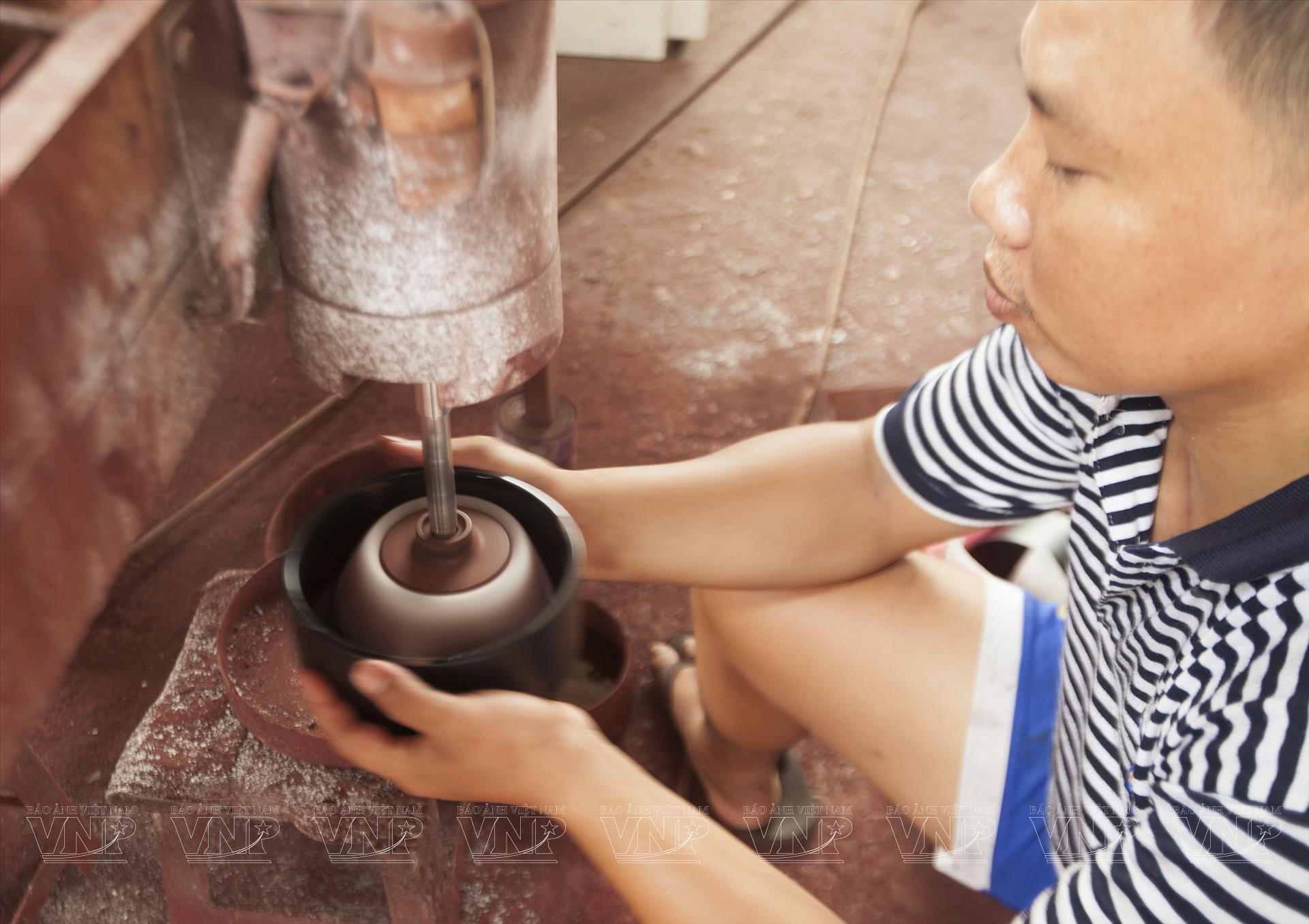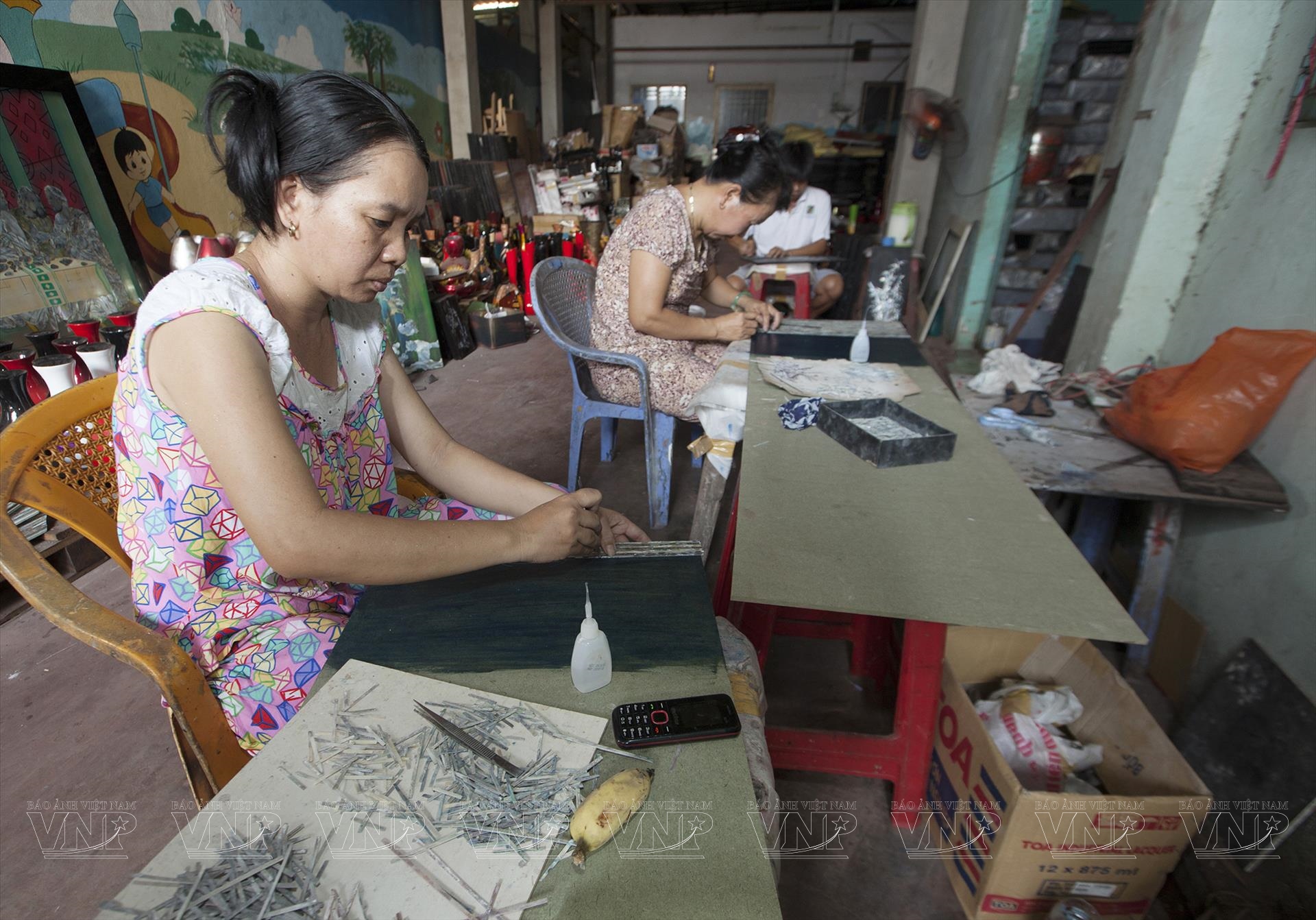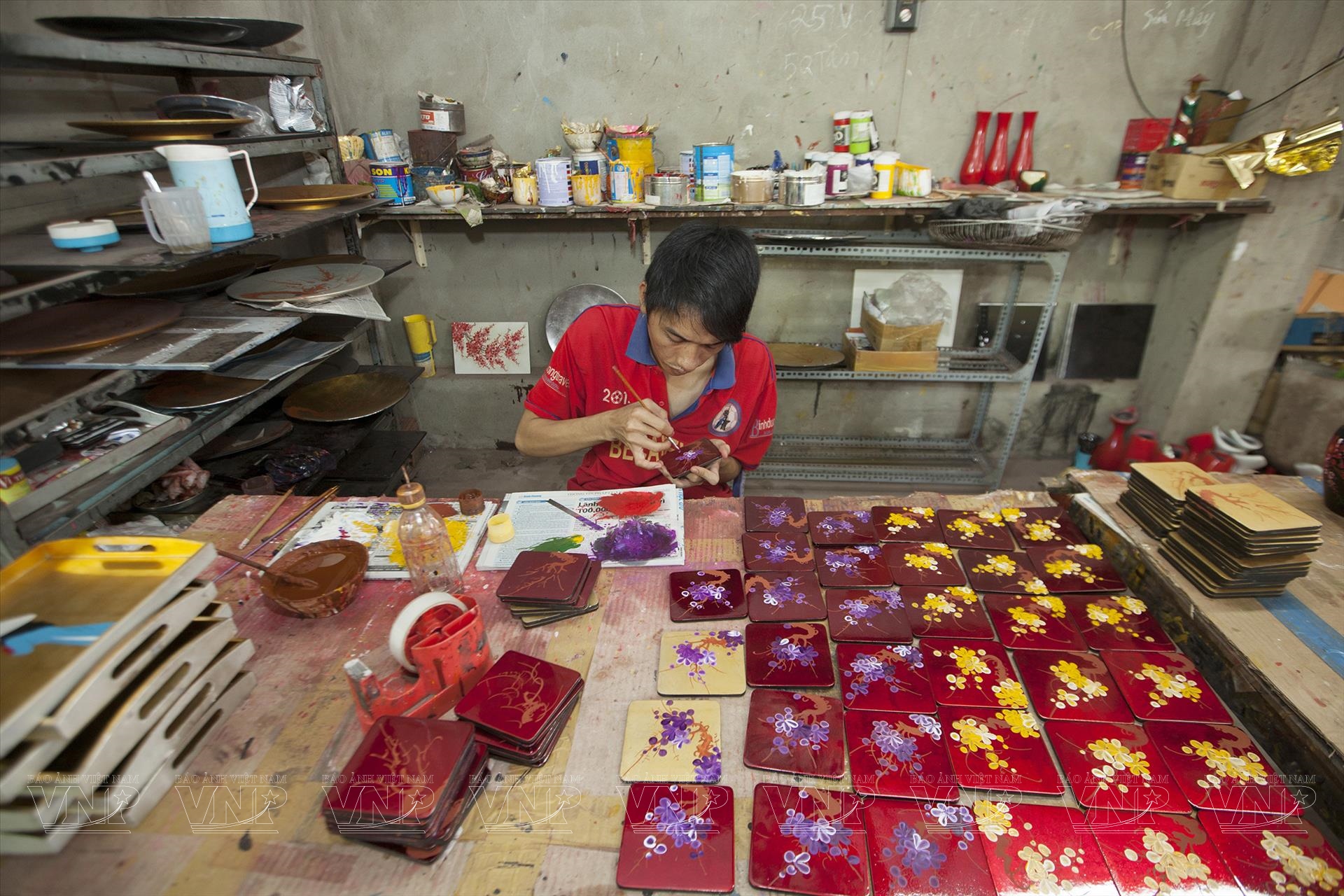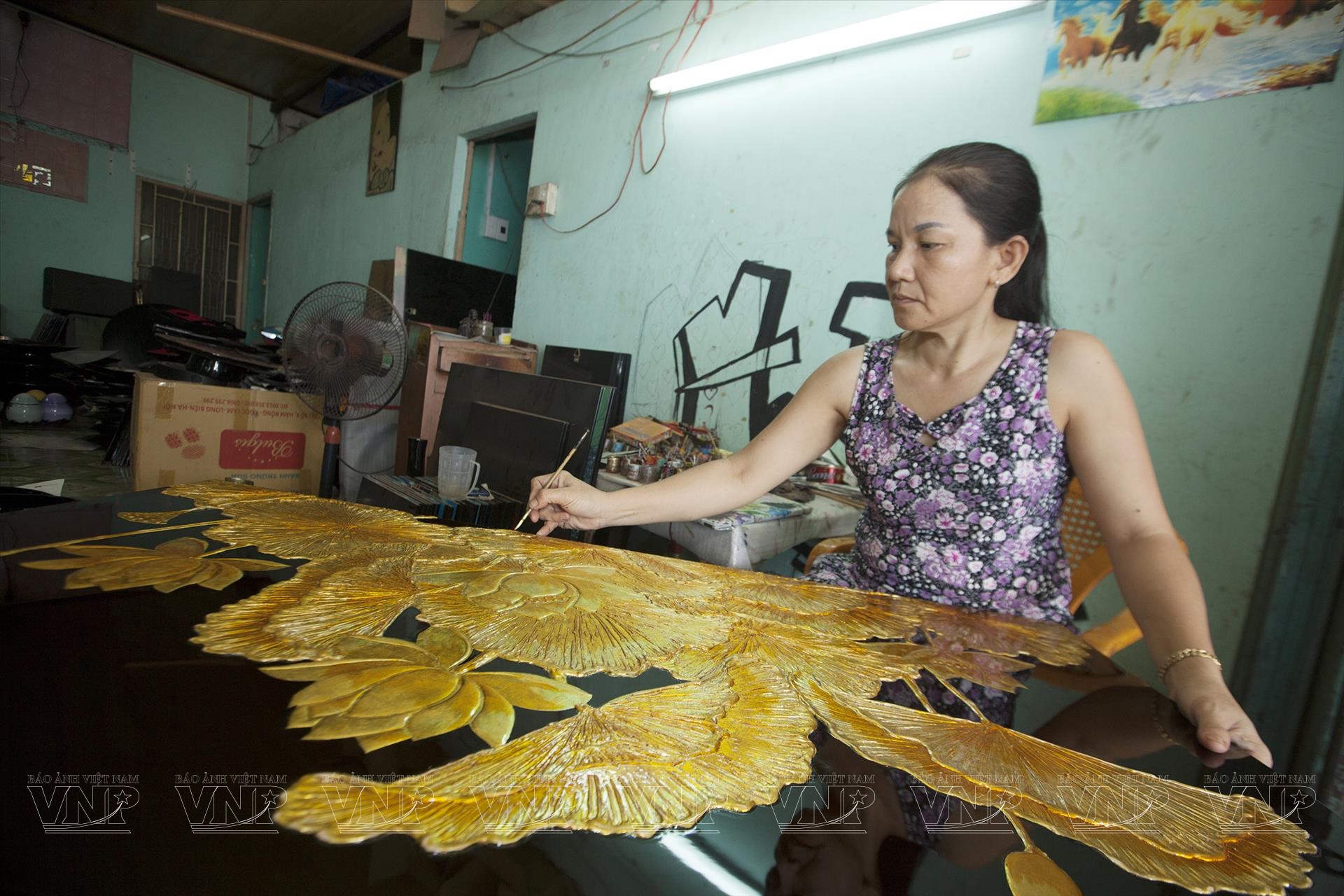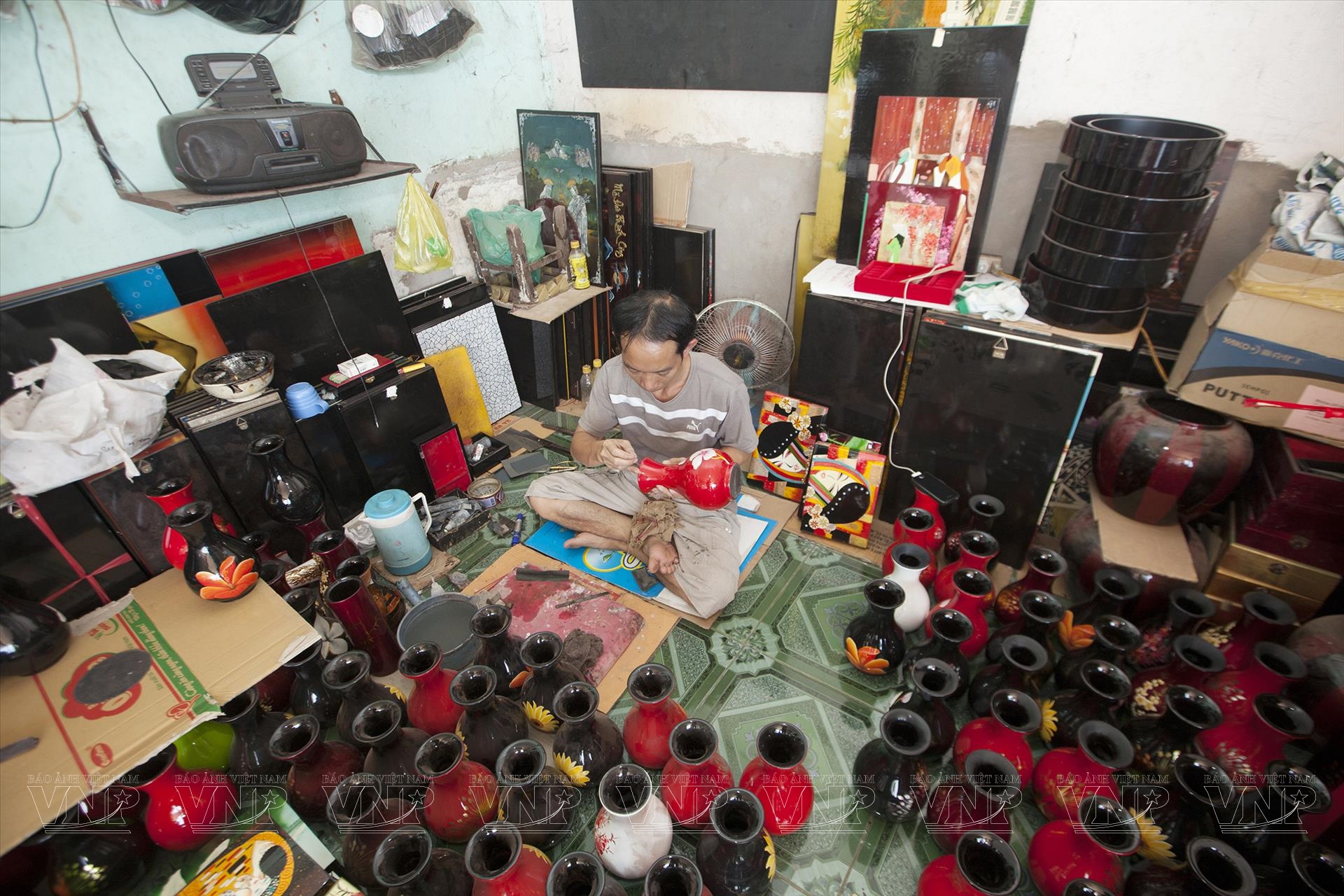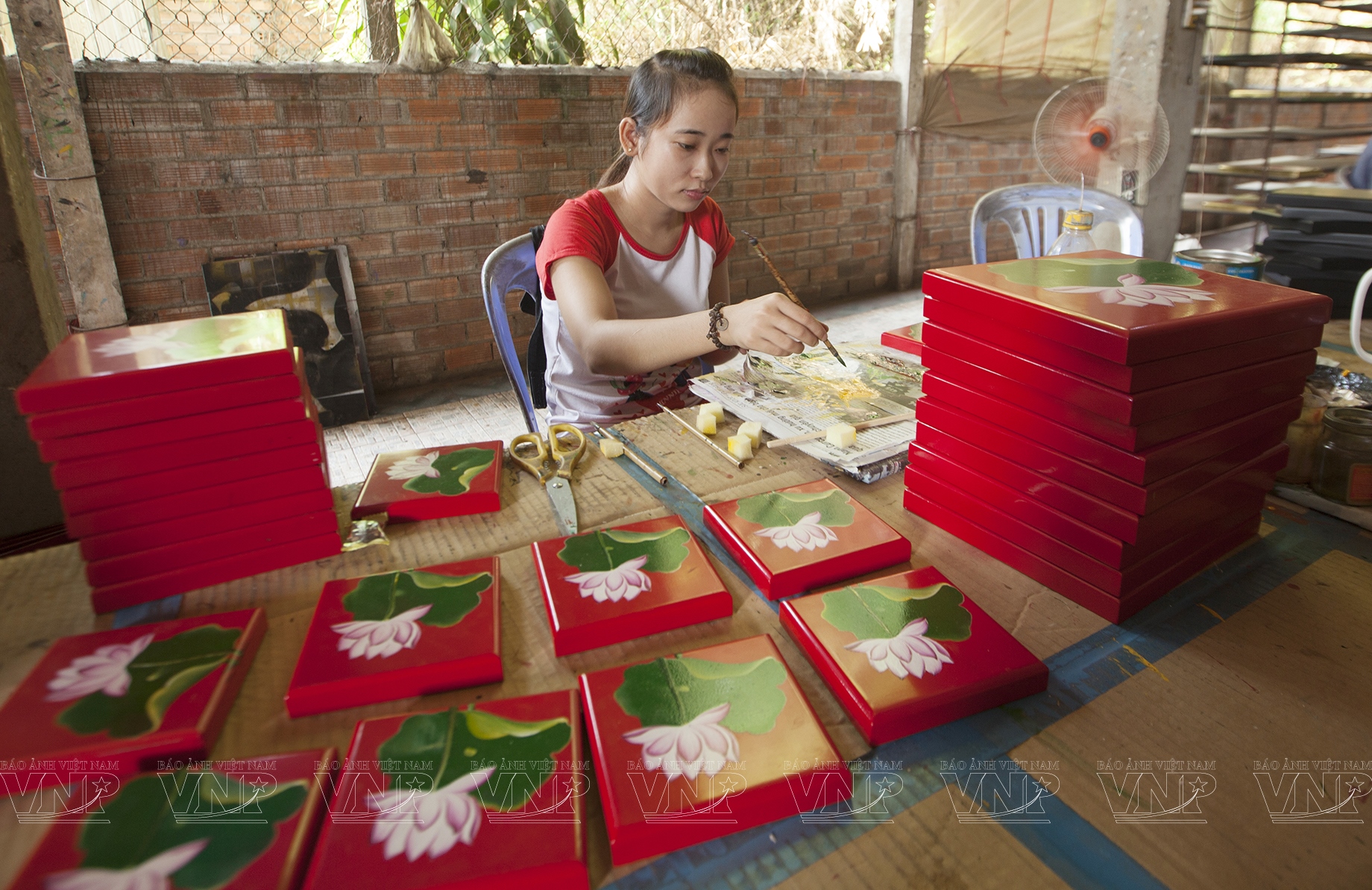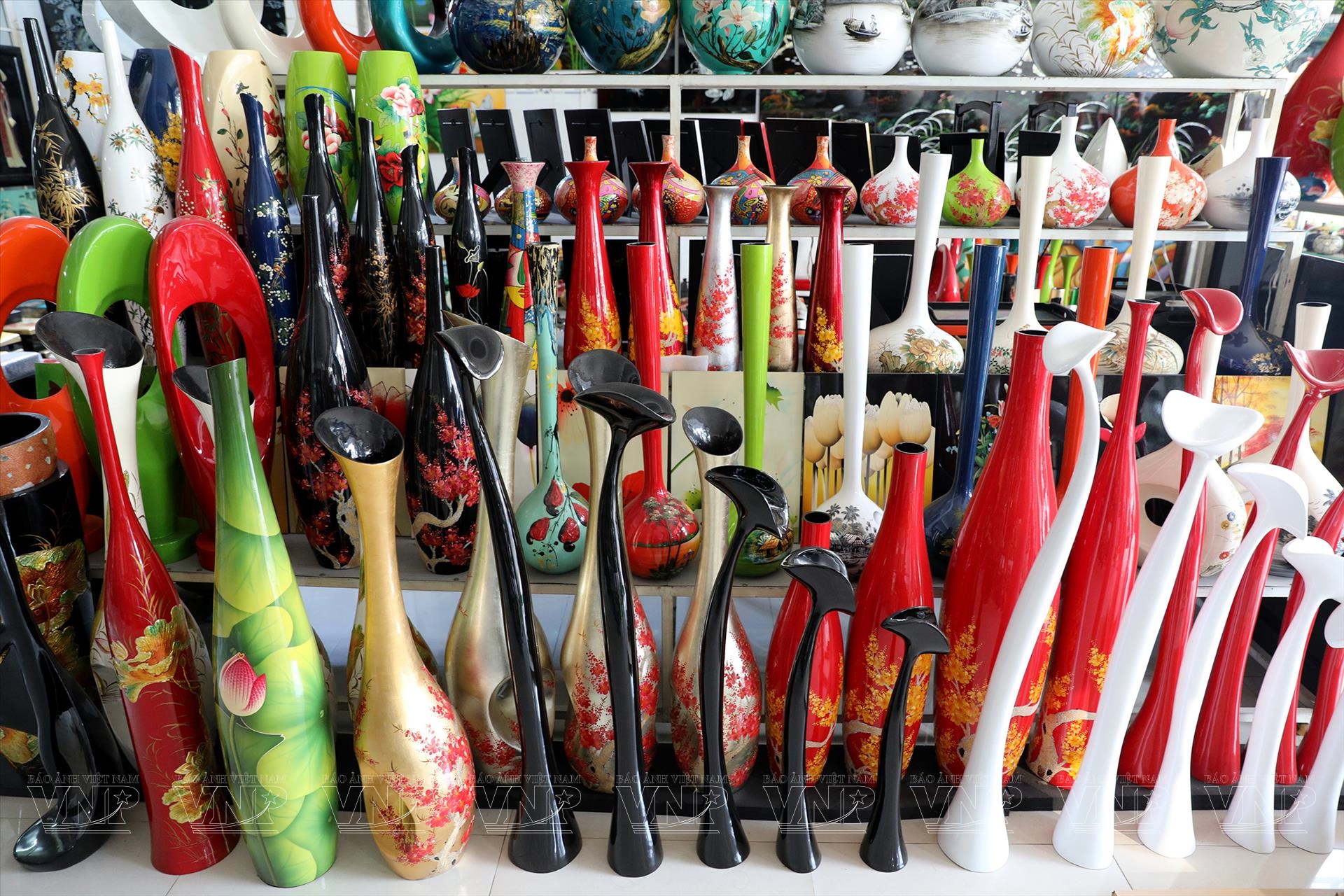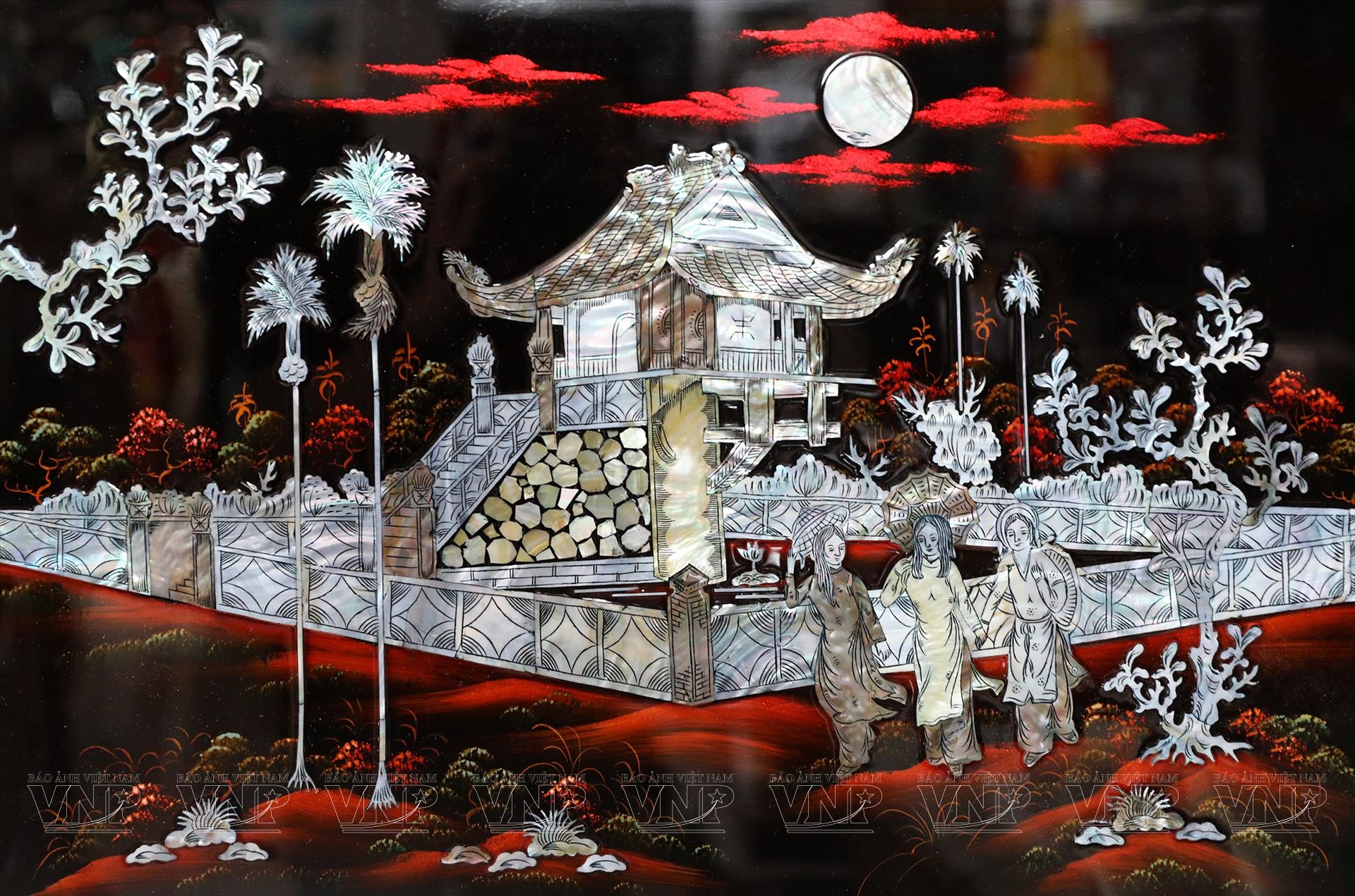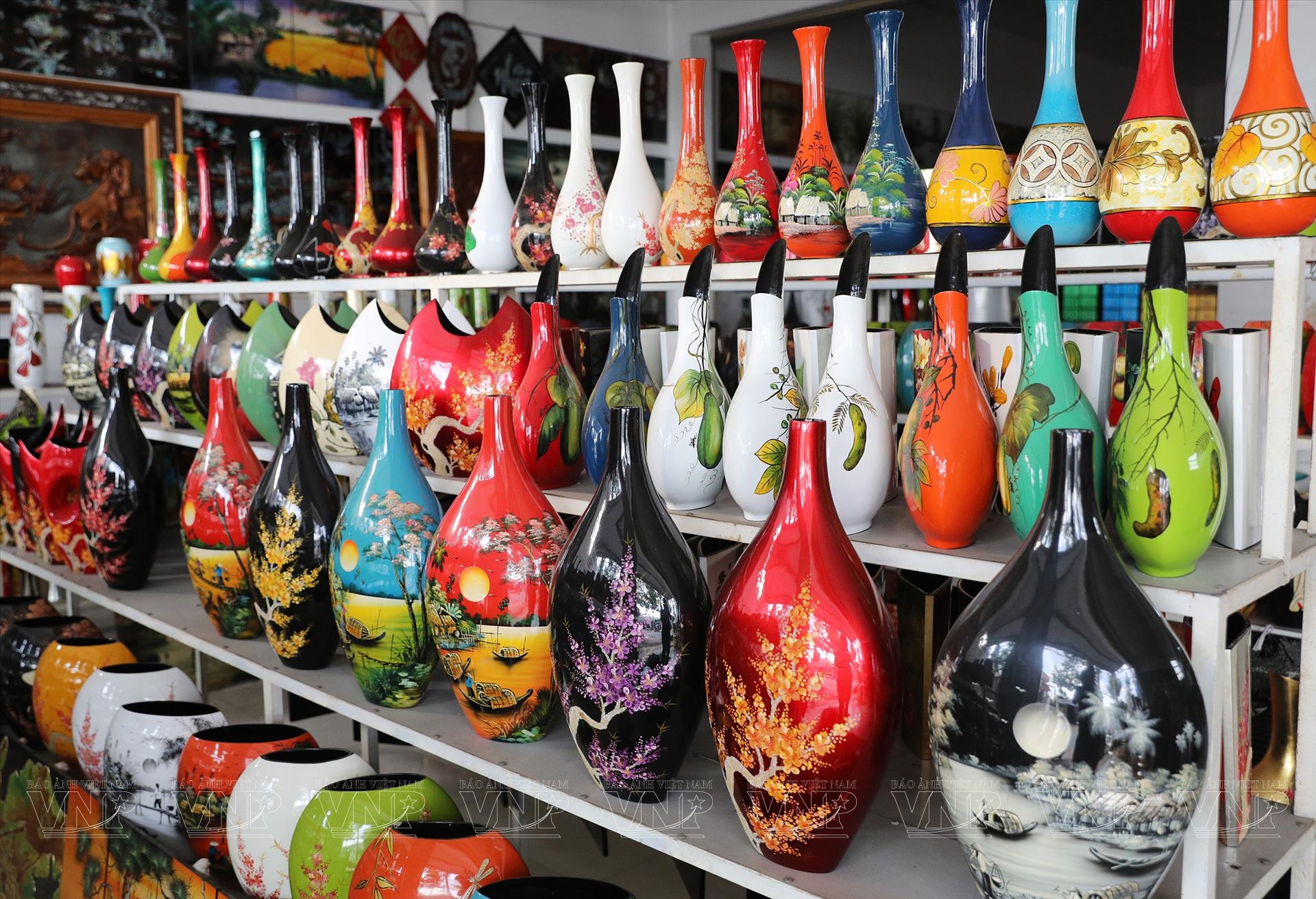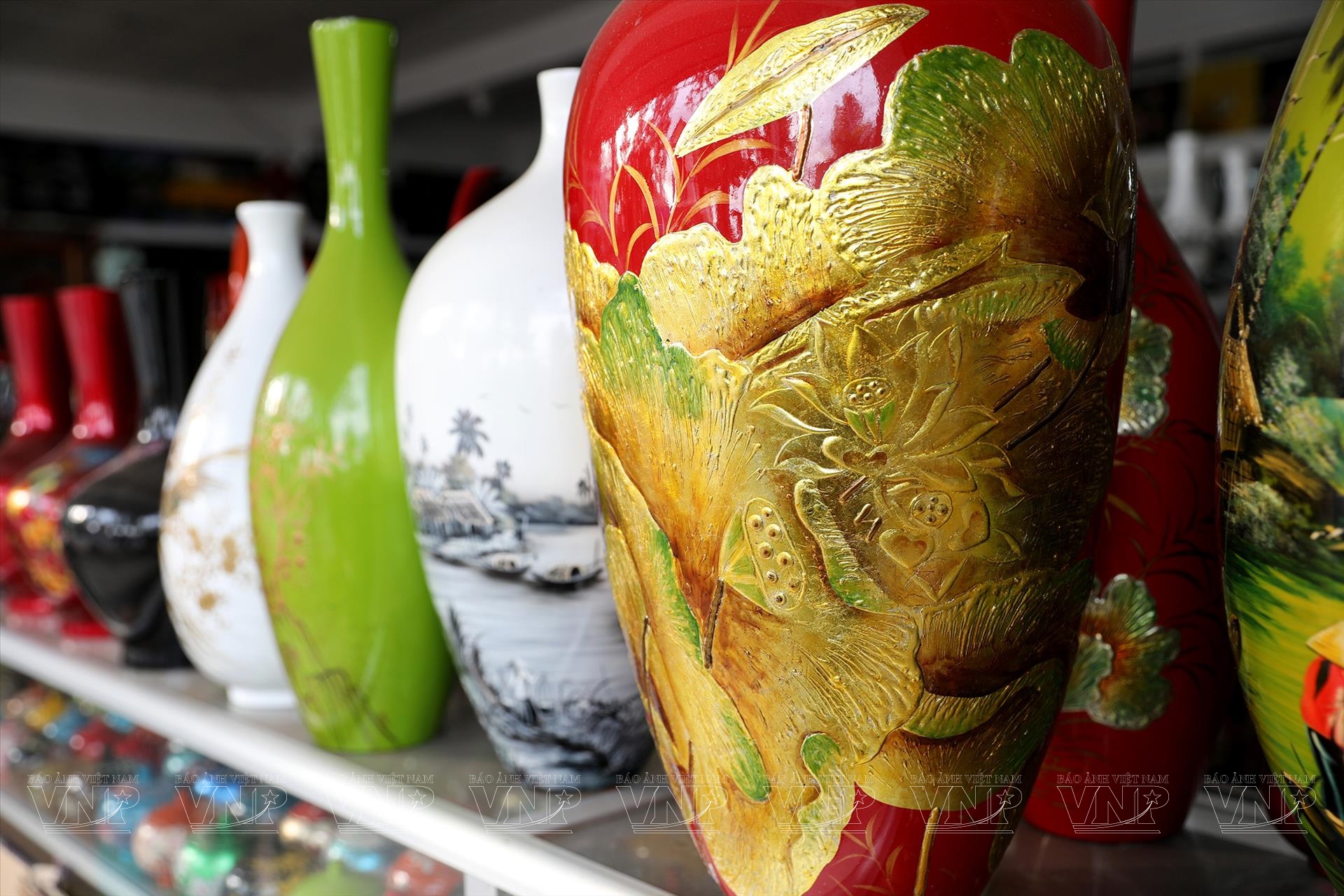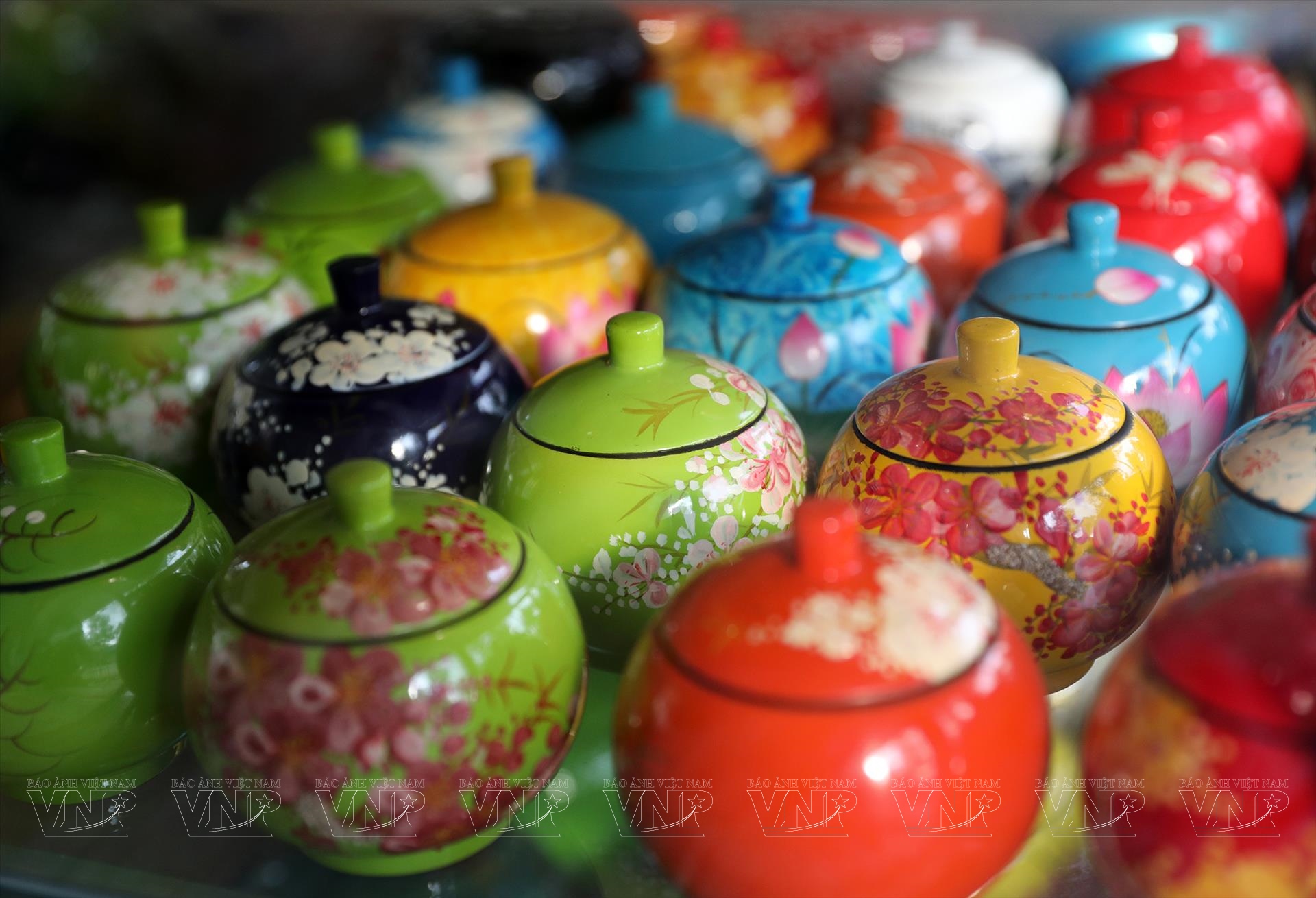Tuong Binh Hiep Lacquer Village
Located in Thu Dau Mot, Binh Duong province, Tuong Binh Hiep Lacquer village is a very old traditional craft village using lacquer as a decorative art.
At the end of the 17th century, immigrants from the North and Central Vietnam brought this craft to the area. At the beginning, they were still grieving about having to leave their homeland. Because of this, they recreated the images of their homeland on lacquer paintings.
Creating a lacquer product requires a lot of experience. Depending on each type of product, lacquer can be used on many different materials, such as wood for furniture, chipboard for pictures and boxes, pottery, fabric or paper. Lacquer is also classified according to different uses and products.
After brushing the fabric, the craftsperson usually has to go through five stages of applying the lacquer. Each work has 16 to 30 layers which depend on the size and types of paintings as well as a specific fine art product.
In the past, the craftsperson had to grind the lacquer after each layer. However today they only grind after completing each stage, saving a lot of effort and time while still ensuring the technical requirements.
To form a traditionally made lacquer product, artisans need to go through 25 phases. Some fundamental stages such as the first coating have to be conducted up to six times before completion. Layering the lacquer alone requires three to six months to ensure its quality.
The traditional beauty of Tuong Binh Hiep lacquerwares has been preserved through many generations. It includes the delicacy and elegance of patterns and details.
Through the many changes of history, Tuong Binh Hiep lacquer village still maintains its traditional cultural traits and national identity. The fruitful development of the craft in recent years is the pride of not only the village but is also a cultural heritage of the nation.
By Thong Hai/VNP Translated by Nguyen Tuoi


